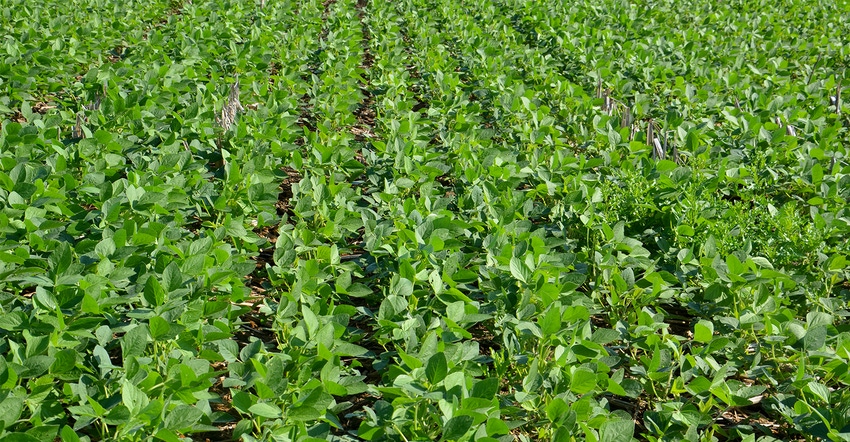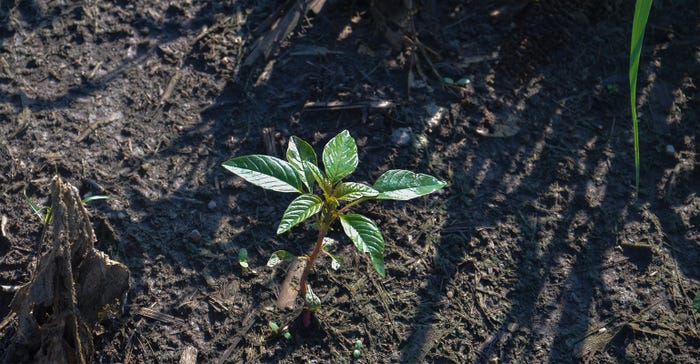
If you don’t think you have a certain weed in your area and then suddenly, right before your eyes, there’s a plant of that species, it catches your attention.
If you farm in the western Corn Belt, you’ve likely dealt with tall waterhemp for several seasons. If you live in the eastern Corn Belt and find even one waterhemp plant, it may send off alarm bells.
People struggling to control resistant waterhemp likely wouldn’t blame you if alarm bells go off. In other places, the weed that triggers a frightening response when discovered in the field is Palmer amaranth.
In the West and South, where they already battle one or more of these difficult weeds, it may be a different new species altogether that raises concern.
“Local farmers came to me concerned about finding waterhemp in their soybeans this year,” says Jim Luzar, a Purdue University Extension educator in Parke County, Ind. Luzar has spent his career working with farmers in west-central Indiana. “Almost every one of them was surprised to find it, because they hadn’t seen it in their fields before.”
 SHOWSTOPPER: If you haven’t dealt with tall waterhemp before and you find this small plant while walking your fields, it should get your attention. This one looks like it hopped right off the page of a weed identification manual.
SHOWSTOPPER: If you haven’t dealt with tall waterhemp before and you find this small plant while walking your fields, it should get your attention. This one looks like it hopped right off the page of a weed identification manual.

If you’re dealing with waterhemp, you know the time to stop it is when you’re just seeing a few plants.
“We even have a couple farmers who hired crews to rogue out waterhemp plants, because they didn’t want them going to seed,” Luzar adds.
Efficient seed producer
Luzar arranged a meeting with several farmers, agronomists and Bill Johnson, Purdue Extension weed control specialist, to talk about waterhemp. Johnson wasn’t surprised that no one noticed the weed, and then it suddenly seemed to show up.
“He told them that it is a very efficient seed producer,” Luzar says. “Even if a plant is damaged or slowed down by a postemergence herbicide, it can still recover and produce several thousand viable seeds. Once a seed bank starts to build up, it can spread pretty quick.”
In areas where waterhemp isn’t well-established yet, it’s worth it to try to keep it out, the educator adds. If just a few plants produce seed, the combine can spread them — and not only in the same field, but also field to field.
Luzar sees a time in the not-too-distant future when someone who owns farmland might be able to realize a premium cash rent if he or she can demonstrate that the land is free of certain weeds, like waterhemp and Palmer amaranth.
You only know you have specific weeds if you scout, says Steve Gauck, a sales agronomist with Beck’s, Greensburg, Ind. He also farms with his family and faces these issues daily. Scouting also lets you know how well your current weed control program is working, and what it might take to make it work better, he adds.
“I found some good examples, while walking fields, of what happens when marestail plants are taller than you like when you apply the spring burndown and residual herbicides in no-till situations,” Gauck says. “You may burn back the top growth, but if you don’t kill the growing point or buds below it, it can regrow.”
 ALIVE AND KICKING: Agronomist Steve Gauck pulled up this stubborn marestail plant to show how it regrew, from both the center stem and buds that were not killed during the burndown application.
ALIVE AND KICKING: Agronomist Steve Gauck pulled up this stubborn marestail plant to show how it regrew, from both the center stem and buds that were not killed during the burndown application.

Gauck found a classic example where the marestail plant not only sent out new branches below the center stem, but where even the center stem itself regrew.
In another classic example, the center stem was dead and didn’t regrow, but it sent out branches from below that produced a plant by late season. Plants that survive have a chance to produce seed.
Weed lessons
There are two lessons here, Gauck says.
“First, you can tell about how tall the plant was when the application was made,” he says. “The dead part of the center stem on plants where it continues growing represents the height at spraying. It’s often 12 inches or more. On plants where the center stem is dead, the plant may have been even taller, since some of the stem above what you find may have already decayed.”
 DEAD WEED GROWING: The burndown application killed the center stem on this marestail, but it regrew from buds that weren’t killed. The dead stem represents the approximate height of the original plant when sprayed.
DEAD WEED GROWING: The burndown application killed the center stem on this marestail, but it regrew from buds that weren’t killed. The dead stem represents the approximate height of the original plant when sprayed.

The second lesson is simply how hard it is to control a plant like marestail in the spring, Gauck says.
“Once they shoot out of the rosette stage in the spring, they can be tough to control,” he observes. “One of the best times to work on marestail is with fall herbicide applications. That’s when you can control young marestail plants that emerge in the fall. You’ve got to catch them while they’re small.”
Decision Time: Production is independently produced by Farm Progress and brought to you through the support of Case IH.
About the Author(s)
You May Also Like




